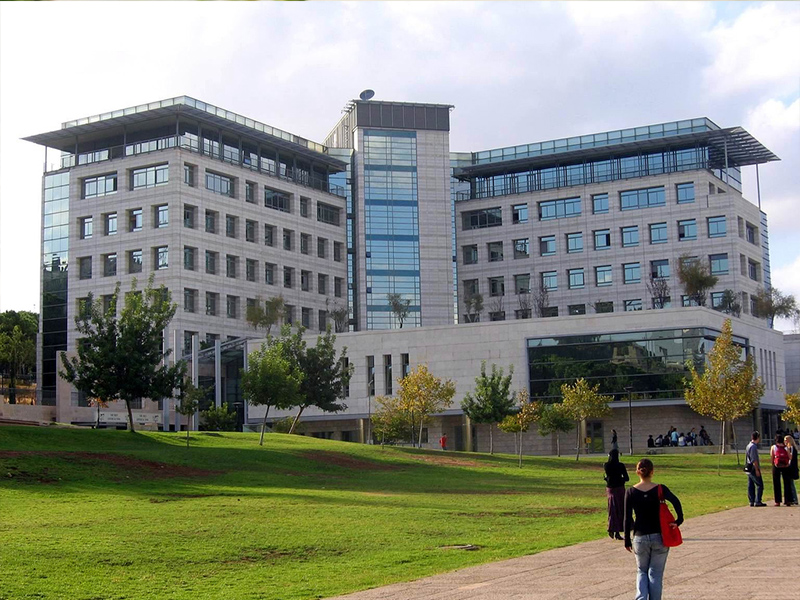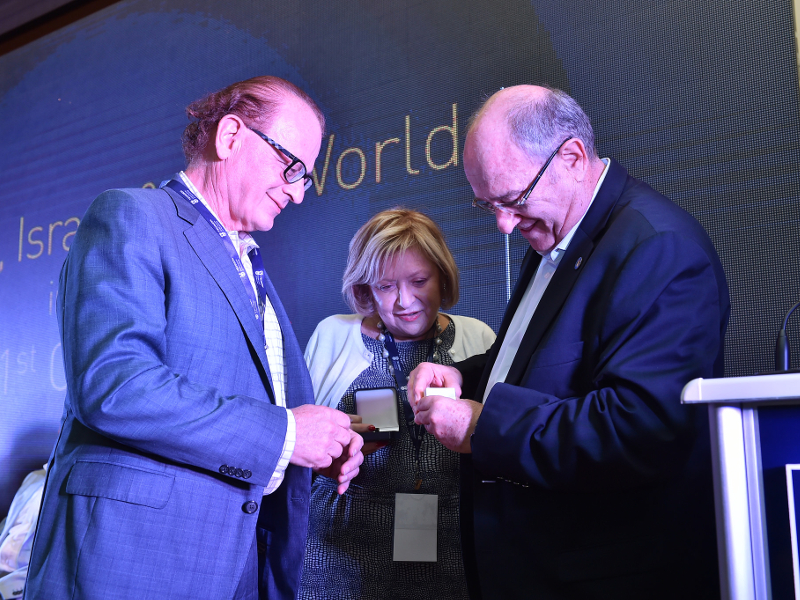Torontonians Andrew and Aviva Goldenberg were honoured for their major gift to Israel’s Technion Institute of Technology on June 13 at a groundbreaking ceremony for the Dr. Andrew and Aviva Goldenberg Architecture Studio Pavilion, as part of the university’s annual board of governors conference. The couple have donated $6.7 million to establish the new architecture facility, as well as to set up fellowships in robotics engineering.
The choice of these two fields came naturally enough for the Goldenbergs: Andrew is a robotics engineer, while Aviva is an architect. The couple met while they were students at the Technion exactly 50 years ago, in 1967, before coming to Canada in the early 1970s.
After completing his PhD at the University of Toronto in engineering in 1975, Andrew Goldenberg, who was born in Bucharest, Romania, found himself on an elite team working with NASA and Canada’s National Research Council to build robotic components for the space shuttle. That program was later renamed and immortalized as the Canadarm.
Over the following decades, he continued to teach at U of T and elsewhere, while also running his own company, which was acquired by a publicly traded Chinese company in 2015. He has stayed on as chief technology officer, and although he’s officially retired from the U of T now, he continues to supervise grad students. “I’m actually working more than before – working for a public company is very demanding,” he said.
According to the U of T, Andrew Goldenberg has supervised the largest number of graduate students in his faculty and has been cited in over 4,500 papers, books, conference proceedings and patents, the highest citation count in the mechanical engineering department and among the highest in his faculty.
Returning to Technion on recent visits to Israel, Andrew Goldenberg has been very impressed with the work being done there, particularly in medical robotics and defence.
READ: GOVERNOR GENERAL RECEIVES HONORARY DEGREE FROM TECHNION
The fellowships in robotics engineering, details of which are still being discussed, reflect Andrew Goldenberg’s desire “to make the robotics field accessible by ordinary engineers.” He also hopes to make robotics available for broader use by the general public, “to have them become less expensive and useful to ordinary people in their ordinary lives.”
Although the fellowships are not related to his business connections, he would love to see his Chinese company get involved in setting up a research centre at Technion. The university already has numerous Chinese interests, including a satellite campus in Guangdong province. “The Chinese are very proud of their connection with Israel,” he said.
Like Andrew, Aviva Goldenberg is thrilled by what she’s seen happening in her field at Technion. “They are totally on par with top architectural educational facilities all around the world,” she said.
“I was very impressed by the quality of teaching, the quality of study, the quality of research.… When I was a student, architecture was not a graduate subject. The Technion, along with many other schools around the world, has added graduate courses, allowing architects, beyond the ability to practice, to do more analytical work, which reflects in their practice, reflects in their thinking.”
She was also pleased to realize, looking back on her career, that her education at Technion had enabled her to not only work in Canada, but to teach architecture here for 25 years. Both say they’re excited to be able to thank Technion for launching them on successful and satisfying careers.
As an architect, Aviva Goldenberg also appreciates the design of the new Architecture Studio Pavilion, a modernistic steel and glass structure that will piggyback the roof space between two existing buildings – a similar concept to the 2004 “tabletop” extension of the existing OCAD University building in Toronto. Beyond its striking visuals, this type of design is greener, allowing for the creative use of existing infrastructure, without damaging surrounding greenery or interfering with rainwater drainage.

“Construction goes up on in the sky and classes go on as usual,” said Aviva Goldenberg. Perhaps appropriately, given its connection with Canada, the building will also stands out for its bright red and white colour scheme.
Founded in 1912, Technion is the oldest university in Israel. Albert Einstein visited in 1923 and planted a palm tree that still stands on the original campus in downtown Haifa. Returning to Germany, he also founded the first international Technion Society, beginning a strong tradition of global support. Today, Technion prides itself on its demographic makeup: 20 per cent of its students are Arab, exactly equal to the Arab population in Israel.
The Goldenbergs and other donors, including a $4-million donation by Japanese entrepreneur Hiroshi Fujiwara, were honoured at a special panel of the board of governors, at which university president Peretz Lavie said, “We have friends and donors here from South Africa, Japan, Canada, the United States and Israel, all of whom have a single common denominator: the aspiration to repair the world. By giving, you are making the world a better place.”
